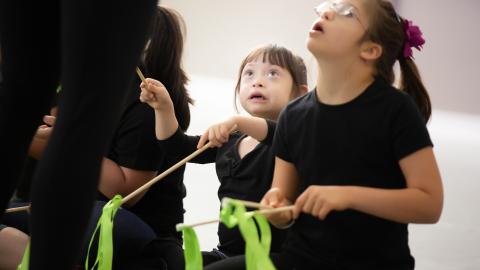Below is a list of notes from the accessibility roundtable on children’s ministry. The recording link is below if you want to listen in and learn. It was a wonderful conversation with many good ideas shared. Here are a few of them
How to make children’s ministry spaces more accessible?
- Special chairs with buckles that can allow children in wheelchairs to sit on the floor and join the circle
- Adaptations for those with visual impairment
- Use lamps instead of overhead lights in children’s spaces
- Make use of a visual timer
- Helps those with ADHD with focus to see the time ticking away. Visually see deadline as it passes. Understand how much time left.
- Helps a child get their bearings in a very visual way
- Sometimes doing a task is hard until it feels urgent. Sense of urgency can be helpful for those who need the time reminders
- Helps those with anxiety - how long children will be away from their parents
- Provide intake forms for children’s ministry
- Helpful for the leaders to know more about the children they will be working with and what accommodations they need in order to learn and grow in the best way possible.
- See this example
How to make the sanctuary more accessible for children?
- Visual calendar
- Include small icons/pictures in bulletins or on the screens to indicate where you are in the service and what you are doing. The picture and the symbol together help children understand what is going on.
- “Accessible gospel, Inclusive Worship” by Barb Newmann has examples
- Giving adults with disabilities a job in the worship service
- Blowing out candle, usher, help with set up/tear down
- Kids zone (seating area in the back of the sanctuary)
- Be mindful about how to be intentional about forming faith in these spaces and not letting them just turn into fun time.
- Sound
- Consider having separate spaces in the church available for volume control. Service is streamed but there are options for volume and sound.
- Glassed in room in the sanctuary
- Dispenser of disposable earplugs
- Drums in plexiglass to contain sound
- Hearing loops/hearing enhancers
- Noise cancelling headphones
- Visual impairment
- Screens - white on black or black on white. Very dark and very light
- No photos or pictures on screens with words
- Minimum 14 point font for printed
- Sans serif font (helpful for those with dyslexia)
- Braille banners
- The power of repetition
- Variety is good in music but there’s a case to be made for repetition for learning and visual impairment
- Repetition is more accessible
- Sign the repetitive words - learn the ASL and teach the congregation to sign

Let's Discuss
We love your comments! Thank you for helping us uphold the Community Guidelines to make this an encouraging and respectful community for everyone.